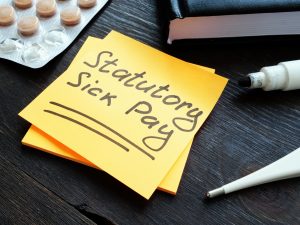Last week as a result of talks between HMRC and the Department for Education (DfE), sector guidance was issued for nursery and child care businesses. We welcome this development, although the guidance is not overly clear. We have prepared an analysis for all those in the sector.
Background
In the published HMRC guidance to the Coronavirus Job Retention Scheme (CJRS) which was last updated on 20 April, it is stated that:
“Where employers receive public funding for staff costs, and that funding is continuing, we expect employers to use that money to continue to pay staff in the usual fashion – and correspondingly not furlough them. This also applies to non-public sector employers who receive public funding for staff costs.”
This has caused a great deal of uncertainty in the sector, as many nurseries and child care businesses in the South East receive funding from local government, alongside their fees from parents and carers, yet want to furlough their staff.
We have prepared a detailed guide to the CJRS, which can be found here https://srcadvisory.com/blog/coronavirus-job-retention-scheme-made-easy-employers-20-april-2020
Can we benefit from CJRS?
If your business is wholly funded by fees paid from parents and carers, then you can apply for CJRS funding on the same basis as any other business.
However, if your business has a mix of public income (largely this will be funding for the free early education entitlements, also known as ‘DSG funding’) and private income (largely this will be the fees that parents and carers pay for childcare beyond the free entitlements), you will have to pay attention to the DfE’s guidance.
On 17 March 2020, the Chancellor confirmed that the government will continue to pay local authorities for free early years entitlement places for 2, 3 and 4 year olds to support providers at this time. The government also confirmed that early years settings should remain open where they are needed to provide childcare for the children of critical workers who cannot be cared for safely at home, and vulnerable children.
The ‘Five Tests’
A private business within the sector should only furlough employees, and therefore seek support through the CJRS, if it meets the following conditions:
- the employee works in an area of business where services are temporarily not required and where their salary is not covered by public funding
- the employee would otherwise be made redundant or laid off
- the employee is not involved in delivering provision that has already been funded (free entitlement funding)
- (where appropriate) the employee is not required to deliver provision for a child of a critical worker and/or vulnerable child
- the grant from the CJRS would not duplicate other public grants received, and would not lead to financial reserves being created
How does this work in practice?
If it is difficult to distinguish whether staff are funded through free entitlement or private income for the purposes of meeting the first 3 conditions as listed above, then as an early years provider you can access the CJRS to cover up to the proportion of your payroll which could be considered to have been paid for from your business’s ‘private’ income.
This would typically be income received from ‘parent-paid’ hours, and excludes all income from the government’s free entitlements (or ‘DSG’ income’) for all age groups.
Calculating the entitlement
You should use the month of February 2020 to represent your usual income in calculating the proportion of your payroll eligible to be covered by CJRS.
Following the initial claim, you should adjust these proportions in subsequent furloughing applications if your income from the government’s free entitlements changes, but you are not expected to make any adjustments in relation to changes in /carer-paid income.
Example
Mary’s business’s February 2020 monthly income was 40% from DSG and 60% from parent/carer income, so she can claim CJRS support for up to 60% of her payroll.
This would be done by furloughing staff whose usual salary / combined salaries come to no greater than 60% of her February 2020 payroll
These proportions could change in Mary’s subsequent furlough applications as a result of her DSG income changing (but not where income from parents/carers increased or decreased).
For example, if in May 2020 she subsequently receives additional DSG income from a local authority as a result of providing additional hours of childcare, a new calculation must be made, again using the February 2020 payroll figure.
Assuming that with the new DSG income, 55% of the business’s total income comes from DSG, her maximum use of the furlough scheme should, from that point, be reduced to 45% of her February payroll, and she will need to unfurlough employees.
SRC-Time are one of the South East’s leading accountancy firms in advising individuals and businesses in all aspects of their accounting and tax affairs and we are able to assist in any issue raised above.
Our expert team is available to provide you with advice and can be contacted on 01273 326 556 or you can drop us an email at info@src-time.co.uk or speak with an account manager to get any process started.

